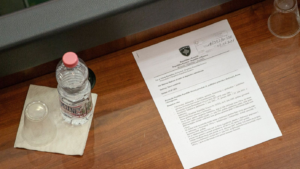In my last blog the fourth UN Sustainability Goal: “Gender Equality, ” was explored with specific references as to how AI can make a valuable contribution to enabling gender equality or also promoting accelerated unconscious bias from data sets.
This blog explores the UN Sustainability goal #6 – “clean water and sanitation for all“. It is one of the 17 Sustainable Development Goals established by the United Nations General Assembly in 2015, the official wording is: “Ensure availability and sustainable management of water and sanitation for all.”
While substantial progress has been made in increasing access to clean drinking water and sanitation, billions of people—mostly in rural areas—still lack these basic services. Worldwide, one in three people do not have access to safe drinking water, two out of five people do not have a basic hand washing facility where they have access to soap and clean water.
A recent UN report on global clean water and sanitation stated over 40% of the world population still doesn’t have access to safely managed drinking water. The report also reveals that more than half of the world population (4.5 billion) also do not have access to a safe sanitation with over 2 billion people using water sources contaminated with sewage.
Accelerating the importance of safe sanitized water conditions due to Covid-19 we all appreciate even more hygiene, sanitation, and clean water for preventing and containing diseases. According to the World Health Organization, having access to clean water and soap is one of the most effective ways of preventing infections from the Covid-19 virus. Never has safe water sanitation been more important to the global populations, yet today billions of people do not have access to safe water.
Although it has been over four years since the United Nations General Assembly adopted the International Decade (2018-2028) for Action – Water for Sustainable development resolution to intensify a focus on water during the next ten years. The heightened awareness over the clean water shortages due to Covid-19 is increased innovations where AI is being used to advance this goal’s achievement.
How AI can help ensure availability and sustainable management of water and sanitation for all?
Microsoft Clean Water AI Software. This software solution uses a deep learning network to detect dangerous bacteria and harmful particles in water. Drinking water can be seen at a microscopic level with real-time detection. The solution leverages edge devices to classify and identify harmful bacteria and cities can install IoT devices across water sources to monitory quality in real time.
Innovyze – AI for Wastewater Treatment Management. Unfortunately sewage flows into our freshwater tributaries and often into our oceans, causing major harm not only to our environment, but increasing health risks. Upgrading outdated waste water treatment facilities to have more intelligent plant operations is key to tackling the complexity of wastewater. There are simply too many complex dependencies, pH stabilization, flocculation, coagulation and treating sewage requires managing many variables. Innovzye has developed a software application called Emagin which leverages AI /ML methods to easily analyze wastewater treatment plant data and provide the predictive recommendations so plants can achieve their clean water sanitation goals.
AnyTech, a Tokyo-based company, is using other AI techniques including computer vision and deep learning to automatically detect contaminants in water. AnyTech founder, Yoshiki Shimamoto, started his research into the technology “DeepLiquid” over ten years ago to monitor and analyze water quality by processing video and images of the water’s surface. Traditionally, water quality and water waste processing is handled by the employees of the water processing plants, who manually observe the water quality with chemical sensors, however the low level of accuracy of this method and the unreliable results have been an issue in the industry. The core technology behind DeepLiquid can carry out an analysis, that would traditionally take humans three days, in just one second with 99% accuracy, enabling massive cost reductions. This AI approach called: Liquid Texture Mining has the potential to be applied in other fields, including in the analysis of microorganisms.
There are many other methods where AI is making a difference in advancing water sanitation and hygiene. Robotics, drones are used in India by Fluid Robotics to spray disinfectants, now nicknamed “robo-WASH.” Other companies are using drone technology to monitor algae bloom contamination from water drinking sources, to be able to be proactive. Other companies are building micro-bots that can identify sewage pipe leakages to be able to fix issues in water contamination.
SmartTerra in India is even using AI to identify water losses stemming from meter malfunctions and unauthorized usage.
Creative entrepreneurs are thinking outside the box and young leaders in particular are motivated to work on some of the world’s most critical social sustainability challenges – ensuring everyone has the right to clean and safe water.
Conclusion
Board directors and CEOs need to accelerate their knowledge of AI and appreciate how AI can be used to solve the number six UN sustainability challenge of closing the gap on clean water.
Safe water is essential for human life.
Each person on Earth requires at least 20 to 50 liters of clean, safe water a day for drinking, cooking, and simply keeping themselves clean. Polluted water isn’t just dirty—it’s deadly. Over 2 million people die every year of diarrheal diseases like cholera.
The United Nations views universal access to clean water a basic human right, and that it is an essential step towards improving living standards worldwide. Water-poor communities are typically economically poor as well, their residents trapped in an ongoing cycle of poverty.
AI is striving to tackle some of our world’s greatest challenges – poverty – diversity and equity for women and girls – climate change and clean and safe water. These examples highlighted in this article demonstrate the value and power that AI, IoT, robots, drones can make in improving the well being and health of what’s really important on planet earth – keeping our families – safe and protected with fair access to the essentials in life. Without clean water and safe sanitary conditions – we cannot build healthy foundations for people to thrive and build a stronger workforce to champion even more challenging issues that loom ahead.
What we know for sure is that AI will be one of the most significant change enablers to help get us to a better and safer world.
Board Directors and CEOs have a duty of care responsibility -so if you cannot get your head around using AI in your own organizations – find ways to help other innovators and support more social change for good.
More Information:
The United Nations developed in 2015 the Sustainable Development Goals as an universal call to action to end poverty, protect the planet and improve the lives and prospects of everyone, everywhere. The 17 Goals were adopted by all UN Member States in 2015, as part of the 2030 Agenda for Sustainable Development which set out a 15-year plan to achieve the Goals.
To see the full AI Brain Trust Framework introduced in the first blog, reference here.
To learn more about Artificial Intelligence, and the challenges, both positive and negative, refer to my new book, The AI Dilemma, to guide leaders foreword.
Note:
If you have any ideas, please do advise as I welcome your thoughts and perspectives.




